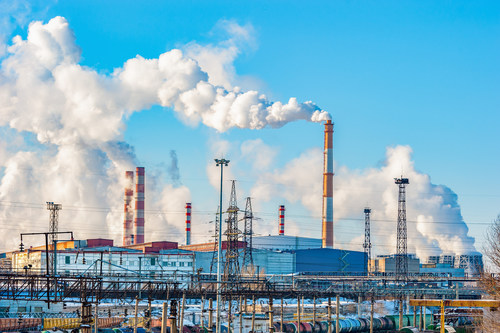INCHEON, South Korea, Jan. 14, 2022 /PRNewswire/ — Dry reforming of methane (DRM) is a promising approach to converting methane and carbon dioxide into chemical feedstock or syngas. However, DRM needs a stable and highly active catalyst for its commercialization. Now, researchers from South Korea have developed a new catalyst that, unlike previously reported catalysts, can be synthesized through a simple one-step process. With its remarkable stability and catalytic performance, the novel catalyst could pave the way for reducing global warming.
The excessive emission of greenhouse gases is the leading cause of global warming, which is causing irreparable damage to entire ecosystems. Fortunately, scientists have come up with creative ways to reduce the amount of greenhouse gases in the atmosphere. One such approach is "Dry reforming of methane" (DRM), a chemical reaction that converts methane and carbon dioxide—the two most harmful greenhouse gases—into a useful mixture of hydrogen and carbon monoxide called "syngas."
DRM requires the use of a catalyst, and metal supported zeolites are widely used for this purpose, thanks to their microporous structure and chemical stability. In particular, certain aluminosilicate zeolites with two-dimensional (2D) structures are already established as effective catalysts. However, their synthesis involves a fairly complex and time-consuming series of steps, limiting their widespread commercialization.
In a recent study, researchers led by Professor Min Bum Park of Incheon National University, South Korea, found a solution to this problem. Using nickel as the active metal species, they developed a single-step process for preparing a new type of catalyst with a 2D "MWW-type" structure. Their paper was made available online on August 16, 2021 and was published in Volume 298 of Applied Catalysis B: Environmental in December 2021.
The novel synthesis approach involved a simple hydrothermal treatment of a borosilicate precursor with a nickel-containing solution for a period of up to four days at relatively mild temperatures. The result was a delaminated 2D material framework with active nickel centers that acted as a molecular sieve. "Molecular sieves with highly dispersed nickel species are attractive catalysts for DRM because they allow for the easy molecular diffusion of the relevant gases and are resistant to deactivation caused by coke deposition," explains Prof. Park.
The team then characterized the new catalyst and tested for its conversion efficiency and stability in DRM. The results were promising. "Our catalyst exhibited extremely high conversion of methane and carbon dioxide into syngas as well as extraordinary stability. It could maintain its catalytic activity for 10 days straight, thanks to the in-situ formation of metallic nickel clusters from the framework species," comments Prof. Park excitedly. Additionally, it did not require pretreatment steps, such as air calcination and hydrogen reduction.
Given the many applications of syngas in the chemical industry and the necessity of reducing greenhouse gas emissions, the proposed easy-to-produce catalyst for DRM could become the key to realizing a circular carbon economy.
Reference
Title of original paper: Atomically dispersed nickel species in a two-dimensional molecular sieve: Origin of high activity and stability in dry reforming of methane
Journal: Applied Catalysis B: Environmental
DOI: https://doi.org/10.1016/j.apcatb.2021.120627
About Incheon National University
Website: http://www.inu.ac.kr/mbshome/mbs/inuengl/index.html
Media contact:
Min Bum Park
327572@email4pr.com
82 32 835 8467
SOURCE Incheon National University


